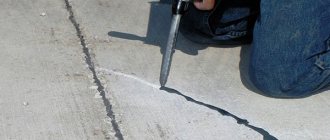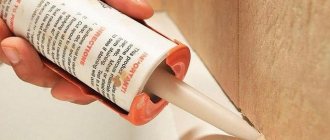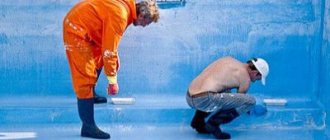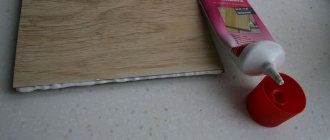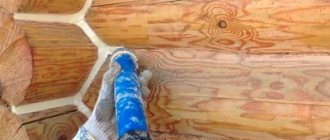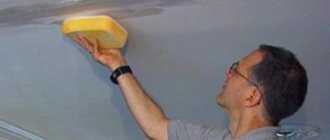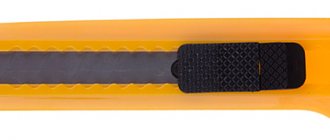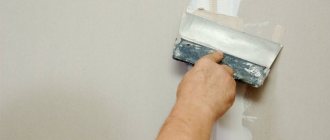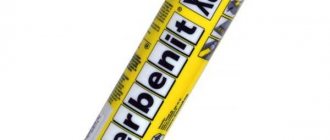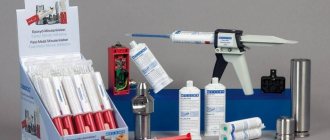What is the suture pattern for?
The body department is a vulnerable element in the structure of a car. It can be damaged in an accident, emergency situations, or the carelessness of the driver or passengers.
Which sealant should I choose to seal the seams on my car? To do this, you need to be able to navigate their properties. Seam sealants are products created to eliminate body defects.
They separate, seal, and glue coatings. In addition, sealants protect the treated area from moisture and corrosion.
Features and properties of joint sealant
Sealant for sealing seams on a machine has the following properties:
- Strength. The applied material will not lose its properties, including after prolonged use.
- Elasticity. The seam will be elastic and will take the required shape.
- Adhesion with a significant component of coatings. Instantly adheres and connects to metal and rubber.
- Moisture resistance. Does not get wet in conditions of significant dampness or direct contact with water.
Types of body sealants
All adhesive substances can be divided according to their area of use. One of them is body work, used for reliable protection against moisture and rust, water resistance when combining parts of the car body.
There are machine sealants designed for sealing seams. There are several types of products, differing in the method of their application and certain data.
Sprayable moisture-curing sealant
The one-component and sprayable product has a huge amount of dry substances, the base of which is MS polymers.
Hardening occurs under the influence of humidity contained in the atmosphere, which guarantees a strong and elastic application to the coating.
The sealant is applied using a gun, it dries within half an hour, and also makes the coating of the seams in the engine compartment, bottom, and trunk similar to the factory one.
Brush-on sealant
This sealant is used everywhere and is produced in a nitro rubber base. It is considered an absolute reproduction of the factory seam and can be used on the trunk, air freshener mounts, jumpers, trays, wheel wells.
It must be applied with a brush. It does not form streaks, dries within 10 minutes, for further painting - within 1880 minutes, guarantees good protection against moisture, oil and fuel.
Sealant tape
Seam tape is needed to restore factory seams on overlapped joints. This light green self-adhesive tape is very comfortable and easy to use.
To use it, you do not need to wait for the material to dry; it can be already painted, very elastic, and suitable for planes with a small radius.
Silicone
For personal non-professional use, silicone sealant is more suitable. The composition of the material gives it high elasticity and strength. Silicone sealants differ in the level of elasticity of the resulting sealing layer, temperature conditions, and, for application to glass, in color range.
Polymerization of the sealant occurs due to the moisture present in the air; the average curing time is about 10 minutes, during which it is necessary to install the part.
Silicone-based sealants are oil-resistant and heat-resistant, withstand temperatures up to +300 °C. They can be used for most engine components. The material fills gaps up to 6 mm thick and is resistant to high pressure and operating speeds.
When working with silicone high-temperature sealant for a car, it is necessary to thoroughly clean the parts to be joined, which is a slight disadvantage.
Extruded sealants
This type of body sealant is used for internal as well as external joints to create a thin and airtight seam. It must be applied using a pneumatic or hand gun.
Similar sealants of various tones are produced specifically for the formation of various substrates.
What sealant should I choose? To best protect your machine, it is advisable to consider a number of factors:
- Area of application of sealant in order to correctly select the right product;
- Proper preparation of the area where it will be applied, which guarantees a high-quality connection, as well as tightness;
- Correct execution of work in accordance with instructions, allowing the use of the substance to be effective, high-quality and economical.
Adhesives for repairing defects in car glass
If we choose adhesive for the windshield of a car in order to eliminate minor defects such as cracks and chips, then such products will be fundamentally different in many characteristics from those polyurethane compounds that are used for gluing.
In particular, the parametric identity of the polymerized adhesive-sealant and glass in terms of optical transparency comes to the fore. However, if manufacturers of repair adhesive compositions have successfully dealt with transparency, then the task of selecting a color match between these two materials falls entirely on the user. And here you can only rely on intuition.
The second point is the plasticity of the glue, its shock-absorbing characteristics. In this case, they will be superfluous, since when sealing cracks, the main thing is strength, and plastic is secondary. For this reason, a good adhesive for auto glass is strong, but quite fragile - in this respect it is comparable to the glass itself.
Repair glass compositions contain polymer resins as a base substance, which differ from polyurethane sealants in a whole range of physicochemical properties. So, for the polymerization process, a necessary condition here is the presence of UV rays, which are destructive for any polyurethane-based adhesive.
Strictly speaking, the strength and ductility indicators are to some extent antagonistic, so the strength of repair compositions is much higher. So much so that the polymerized seam can be polished using polishing pastes. In terms of their ability to withstand large temperature changes, as well as high humidity, adhesives based on polymer resin are also very good and are close in these indicators to glass, as well as some other characteristics (refractive index, resistance to changes in the original color, optical transparency).
There are quite a wide variety of adhesives on the market for repairing auto glass with a one-component or two-component composition. It’s up to you to decide which glue is best for repairing a windshield, but when using a two-component composition, you will have to prepare it yourself by mixing both parts, carefully following the included instructions.
Features of the use of sealants
The purpose and performance of body sealants depends on the elements from which they are made. This affects the quality of the material, color, scope of application and price.
- To apply certain sealants you will need special equipment, so before purchasing you need to read the instructions or consult with the seller. For example, some silane-modified compounds are applied by spraying, so their use will require a specialized air gun.
- Regardless of the type of material used, the body sealant must be applied to a dry, cleaned and grease-free surface. Certain sealants require an auxiliary base primer.
The amount of material is calculated taking into account the volume and duration of the work. For automobile workshops that specialize in body restoration, a cartridge alone may not be enough, but for an ordinary car owner, 1 tube (150 milliliters) is enough to perform light work.
Anaerobic
Anaerobic sealants are a special class of compounds consisting of dimethacrylate esters with the ability to polymerize without access to oxygen.
These materials harden upon contact with metal surfaces in narrow gaps where atmospheric oxygen does not enter. If at least one of the specified conditions is not met, the sealant will remain in a liquid state. This property is often considered an advantage, since time during operation is not limited, installation can be carried out without fear of the material hardening.
In order for the anaerobic composition to polymerize, it is necessary to tightly connect the surfaces of the parts to eliminate excess oxygen. Once such a sealant gets into a narrow metal slot, it will harden in 25-30 minutes, turning into a solid polymer.
The advantages of anaerobic compositions also include high resistance to aggressive chemical environments, vibrations, pressure changes and temperatures. The composition also prevents the formation of corrosion, oxidation, gas and liquid leakage.
A disadvantage of the material is the filling of relatively small gaps from 0.05 to 0.5 mm. To polymerize the composition on non-metallic surfaces or at low temperatures, an activator will be needed.
Types of joint sealant
A huge number of compounds with different properties are sold. In many situations, the sealant includes artificial resins.
The main types of joint sealants include:
- Seam sealant. Its volume is 300 milliliters. To use this type, you will need to use a pistol. When used, you will get a seam without defects. This sealant is produced in 5 tones.
- Suture under a brush. It is produced in cans weighing 1 kilogram. This product is intended for sealing joints and welding seams. It is not exposed to moisture or corrosion. They produce it in four tones.
- Machine sealants-tape. They are designed to form an attractive straight seam. Made with a sticky base for easy use. Once they are applied to the vehicle, they do not need to be dried and sealant tapes can be painted.
Acrylic composition
The composition, made from acrylic polymers, is accessible and adheres well to the porous material. It has elasticity, but with significant destruction it can fall off. The layer of this sealant can be treated or painted.
Bitumen compounds
These compositions are presented as paste-like substances, which are based on bitumen, as well as modern modifiers and fillers. They are used in damp environments, have high adhesion to many planes, and do not require careful preparation of the surfaces being repaired.
Polyurethane types
Polyurethane compounds have high levels of moisture resistance, elasticity, and heat resistance. They are able to withstand mechanical stress.
Such changes will not affect the structural characteristics.
Popular Products
There are many sealants on the market designed for body repairs. Let's look at some of them.
Merbenit XS55
High-strength elastic material (tensile strength 4 N/mm2) on a silane-modified base (SMP). Has high adhesion to many substrates. Used to seal weld seams. In addition, it is used in metallurgy, climate control and ventilation technology, the production of automobiles, containers, freight cars, polymers, and in instrument and mechanical engineering.
Advantages:
- Resistant to salt water, aliphatic solvents, oils, alkali solutions and inorganic acids
- High resistance to vibration and shock
- May be stained
- Does not deteriorate when exposed to weather conditions
- Free from silicone, isocyanate and solvents
- Without smell
BODY 999
Polyurethane sealant with minimal shrinkage. Does not crack even when applying a thick layer of material. Used for sealing body joints, welds, filling voids, etc. Not recommended for use in areas exposed to UV radiation.
Advantages:
- Minimum shrinkage
- Does not spread even on vertical surfaces
- Has high adhesion to various substrates
- Can be painted after drying
- Does not crack
- Long service life
3M 08537
Nitrile rubber sealant. It is used to treat a thin layer of joints inside the trunk, internal parts of doors, places where shock absorbers are attached, sealing welds and bolted joints. Apply with a brush.
Advantages:
- Doesn't spread
- Retains structure well
- Oil resistant
- High elasticity
- Water resistance
Terostat 9320
Silane modified spray sealant. Used as an anti-gravel coating and for additional protection of the underbody of the car. Allows surfaces to be cleaned with sandpaper, which increases the adhesion of the material. Accurately reproduces the factory sealant.
Advantages:
- High adhesion
- Long service life
- Dries quickly
- UV resistant
- Helps absorb noise
- does not contain PVC, silicones and isocyanates
